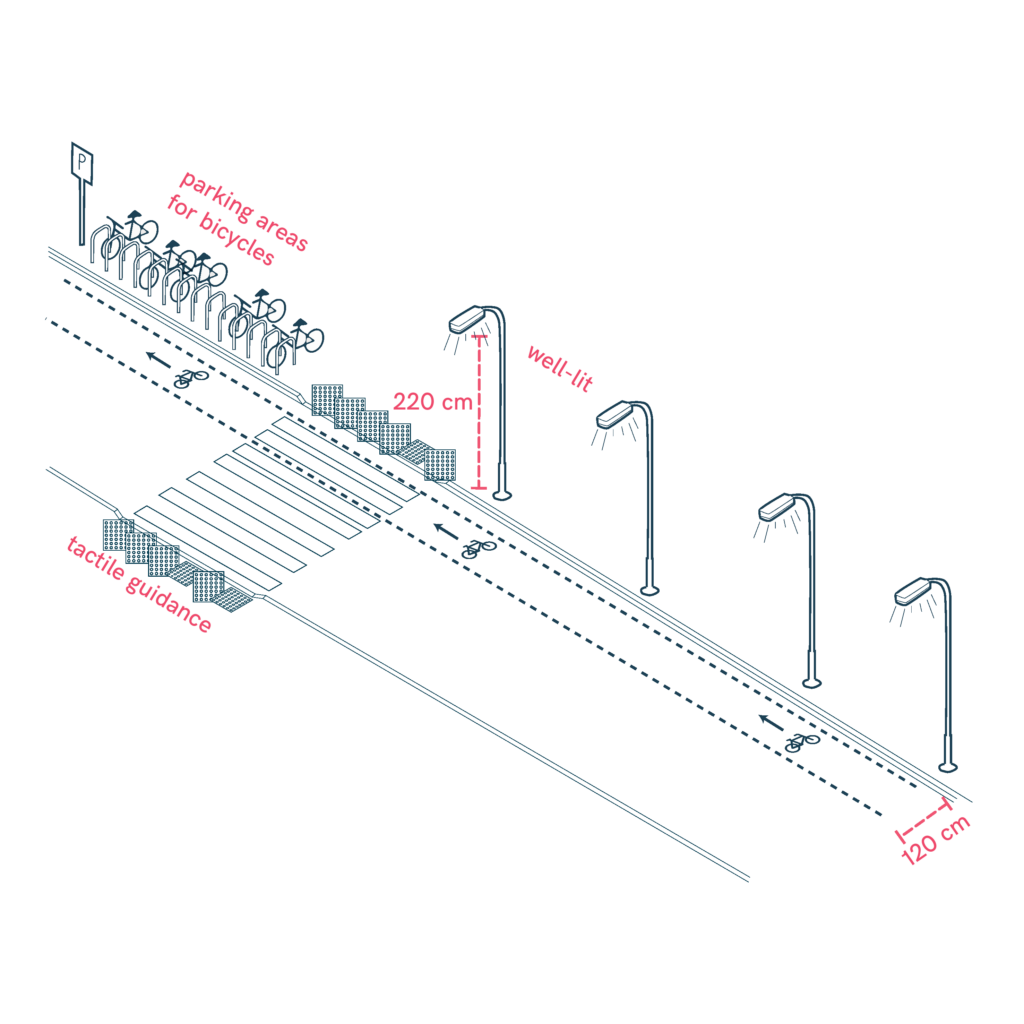Pedestrian and Mobility-Friendly Spaces
Designing spaces for pedestrians, bicycles, and personal mobility vehicles requires careful attention to safety, accessibility, and usability for all users.

- Clearly signal separate lanes for bicycles and personal mobility vehicles that do not encroach on accessible pedestrian walkways. Design intersection points with clear visual and tactile indicators, giving priority to pedestrian right-of-way.
- Design parking areas for bicycles and scooters instead of cars at crosswalks to facilitate visibility when crossing.
- Use color-coded materials or protective barriers to clearly delineate zones for different users, ensuring both safety and clarity.
Sources
- https://accessible-eu-centre.ec.europa.eu/content-corner/digital-library/en-172102021-accessibility-and-usability-built-environment-functional-requirements_en
- https://www.iso.org/standard/71860.html
- https://www.t-l.ch/collectivites/guide-des-amenagements-pour-les-transports-publics-routiers-tl/
- https://www.leitfadenbarrierefreiesbauen.de/fileadmin/downloads/archiv/barrierefreies_bauen_leitfaden_en_bf_version2.pdf
- https://www.vitoria-gasteiz.org/http/wb021/contenidosEstaticos/especial/cea/20190917/Avance_PMSEP_2020_2030.pdf
- https://www.punt6.org/es/books/espacios-para-la-vida-cotidiana/
- Carers
- Children
- Cognitive
- Cognitive abilities
- Decolonial perspective
- Digital
- Digital barrier
- Enviroment
- Environmental
- Gender and generations
- Gender perspective
- Hearing impairment
- Low-education
- Low-income
- Older people
- Other
- Physical abilities and features
- Sensory and Physical
- Socioeconomic
- Visual impairment